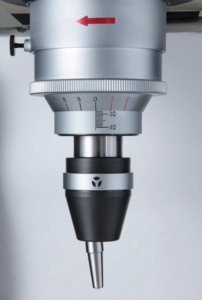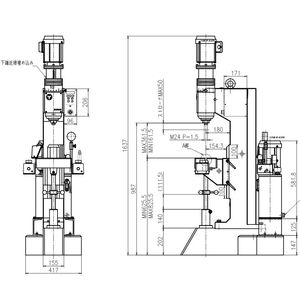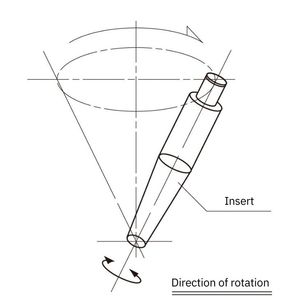
All categories
Featured selections
Trade Assurance
Buyer Central
Help Center
Get the app
Become a supplier

(1508 products available)








































lining 170t are an essential component in the textile industry, serving as the inner layer of garments, bags, and various other products. Designed to enhance comfort and durability, lining 170t play a crucial role in ensuring that the outer fabric performs optimally. They are crafted from a range of materials, each chosen for specific properties such as breathability, moisture absorption, and aesthetic appeal. Whether used in high-fashion apparel or everyday wear, lining 170t contribute significantly to the overall functionality and quality of the finished product.
The diversity of lining 170t available is vast, catering to different needs and preferences. Common types include acetate, polyester, silk, and cotton linings. Acetate is known for its smooth texture and is often used in formal wear due to its luxurious feel. Polyester linings are valued for their durability and resistance to wrinkles, making them ideal for casual and sportswear. Silk linings offer unparalleled softness and are preferred for high-end garments where comfort is paramount. Cotton linings provide breathability and are often chosen for summer clothing to ensure comfort in warmer climates. Each type of lining 170t is selected based on the desired characteristics of the final product, ensuring that the garment performs as intended.
lining 170t serve multiple functions that enhance the garment's performance and wearer experience. They provide a smooth surface that allows the outer fabric to drape elegantly and move freely. By adding an extra layer, lining 170t improve the garment's structure, helping it maintain its shape and fit over time. Moisture-wicking properties are essential in lining 170t, especially in activewear, as they help keep the wearer dry and comfortable. Additionally, linings can offer thermal insulation, which is beneficial in outerwear designed for colder climates. The aesthetic appeal of lining 170t should not be overlooked, as they can add depth and contrast to the garment's design, enhancing its visual impact.
The materials used in creating lining 170t are diverse, each offering unique benefits. Synthetic fibers like polyester and acetate are popular for their durability and ease of care, while natural fibers such as silk and cotton are prized for their comfort and breathability. Blended linings, which combine synthetic and natural fibers, are increasingly popular as they offer a balance of performance and comfort. The choice of material impacts the lining's ability to absorb moisture, its thermal properties, and its tactile feel. Additives such as dyes and finishes are used to enhance the aesthetic and functional properties of lining 170t, allowing manufacturers to tailor the lining to specific requirements. As sustainability becomes a priority, eco-friendly materials are being explored to reduce environmental impact.
Selecting the appropriate lining 170t involves considering the garment's purpose, the outer fabric, and the desired performance characteristics. For formal wear, silk or acetate linings are ideal due to their luxurious feel and smooth drape. In casual and activewear, polyester linings are favored for their durability and moisture-wicking properties. Cotton linings are perfect for summer garments, offering breathability and comfort in warm conditions. It's important to match the lining's thermal properties to the intended use of the garment; for instance, insulating linings are essential in winter coats. Additionally, the aesthetic appeal of lining 170t should complement the outer fabric, ensuring a cohesive and visually appealing design. Proper selection of linings enhances the garment's functionality and wearer satisfaction, making it a crucial aspect of garment manufacturing.
When selecting the right lining 170t, it is essential to consider the garment's intended use. For instance, if the garment is designed for formal occasions, a smooth and luxurious lining like silk may be preferable. On the other hand, casual or sportswear might benefit from more durable and resilient polyester linings. Additionally, the climate in which the garment will be worn plays a significant role. In warmer climates, breathable materials like cotton are often chosen for their ability to wick moisture and provide comfort. The choice of lining 170t can significantly impact the garment's overall performance, making it a critical consideration in the design process.
The outer fabric of the garment is another crucial factor in selecting lining 170t. The lining should complement the outer fabric not only in texture and color but also in weight and drape. A heavy outer fabric may require a more substantial lining to support its structure, whereas a lightweight outer material might be paired with a lighter lining to maintain fluidity and movement. Additionally, the lining's color should either match or contrast with the outer fabric, depending on the desired aesthetic effect. These considerations ensure that the lining 170t enhances the garment's visual appeal and functionality.
Natural fibers in lining 170t offer several advantages, including breathability, comfort, and environmental sustainability. Materials like cotton and silk provide a soft and pleasant feel against the skin, making them ideal for garments worn close to the body. They also allow for better air circulation, reducing the risk of overheating, which is especially beneficial in warm climates. Furthermore, natural fibers are biodegradable, contributing to more sustainable fashion practices.
Synthetic fibers in lining 170t, such as polyester and acetate, are valued for their durability, wrinkle resistance, and ease of care. These materials can withstand frequent washing and wear, making them suitable for garments that require regular maintenance. Additionally, synthetic fibers often have moisture-wicking properties, keeping the wearer dry and comfortable during physical activities. Their ability to hold dyes well also allows for vibrant colors and patterns in the lining fabric.
Blending natural and synthetic fibers in lining 170t is a common practice that combines the best attributes of both materials. Such blends can offer the comfort and breathability of natural fibers with the strength and resilience of synthetic ones. This combination often results in a lining that is both comfortable and durable, providing a balanced performance suitable for a wide range of garments. Blended linings can be tailored to meet specific requirements, offering versatility in garment design.
Finishes and treatments applied to lining 170t can significantly enhance their performance and aesthetic qualities. For example, anti-static treatments can prevent the lining from clinging to the body, while water-repellent finishes are beneficial for outerwear linings. Additionally, treatments that add softness or sheen can improve the tactile and visual appeal of the lining. These enhancements allow manufacturers to customize the lining to meet specific needs and preferences, adding value to the final garment.
Sustainability is an increasingly important factor in the selection of lining 170t. Eco-friendly options, such as organic cotton or recycled polyester, are becoming more popular as they reduce the environmental impact of textile production. Additionally, choosing biodegradable or recyclable materials supports sustainable fashion practices. Manufacturers are also exploring innovative processes that minimize waste and energy use in the production of lining fabrics, further contributing to a more sustainable industry.